Track
PSMA
Automated Treatment Response Evaluation
TrackPSMA enables Al-driven comparison of serial PSMA-PET/CT scans-quantifying tumor-burden changes and applying RECIP 1.0 criteria in seconds for standardized response metrics.
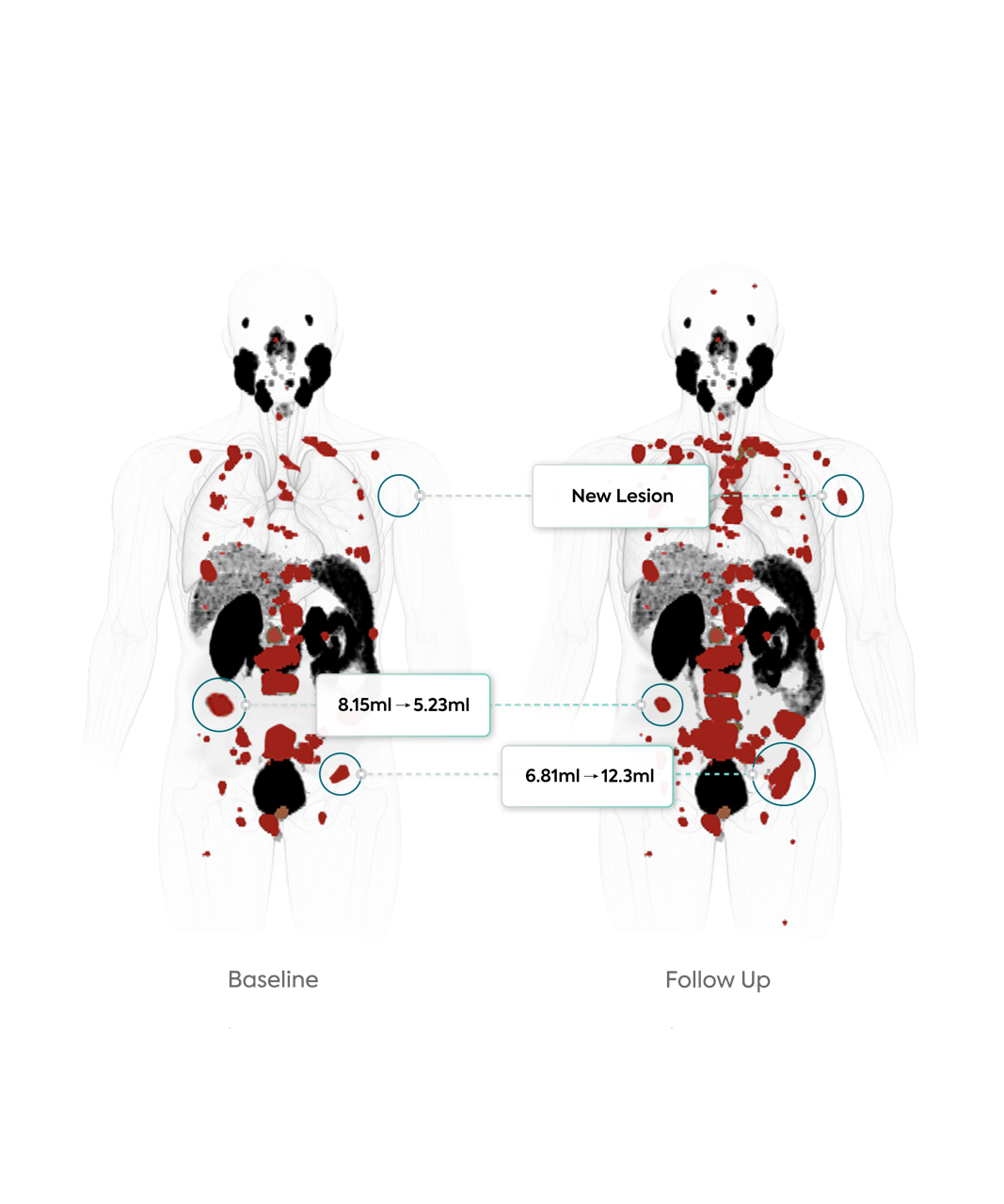
How
TrackPSMA Works
TrackPSMA streamlines PSMA-PET/CT image comparison–from image upload to structured reporting–delivering fast, actionable insights for clinical decision-making in therapy management.
PSMA-PET/CT Image Upload
1
Upload PSMA-PET/CT imaging data securely to Nucs Al's platform, ensuring privacy and confidentiality.
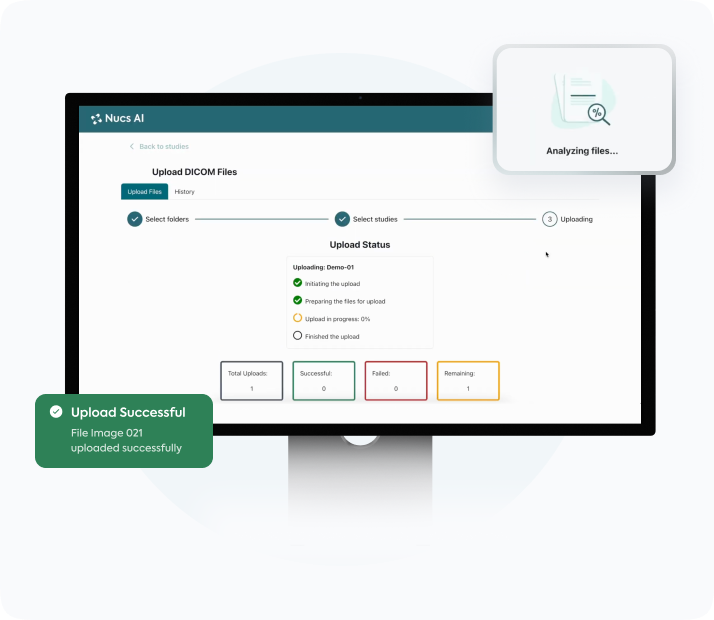
Tumor Detection AI-Technology + Physician Review
2
AI-automated tumor candidates are displayed directly within the CT, PET, Fusion, and MIP views. The physician reviews the first and second scans sequentially, approving AI-detected hotspots and assessing TNM staging and quantitative metrics.

TrackPSMA Comparison Technology
3
TrackPSMA presents a detailed comparison — including automated RECIP classification, tumor burden changes, and TNM code comparisons — all in one view.

Report Generation
4
The result: faster turnaround, consistent reporting, and scalable precision for prostate cancer imaging and scalable precision for therapy response assessment.
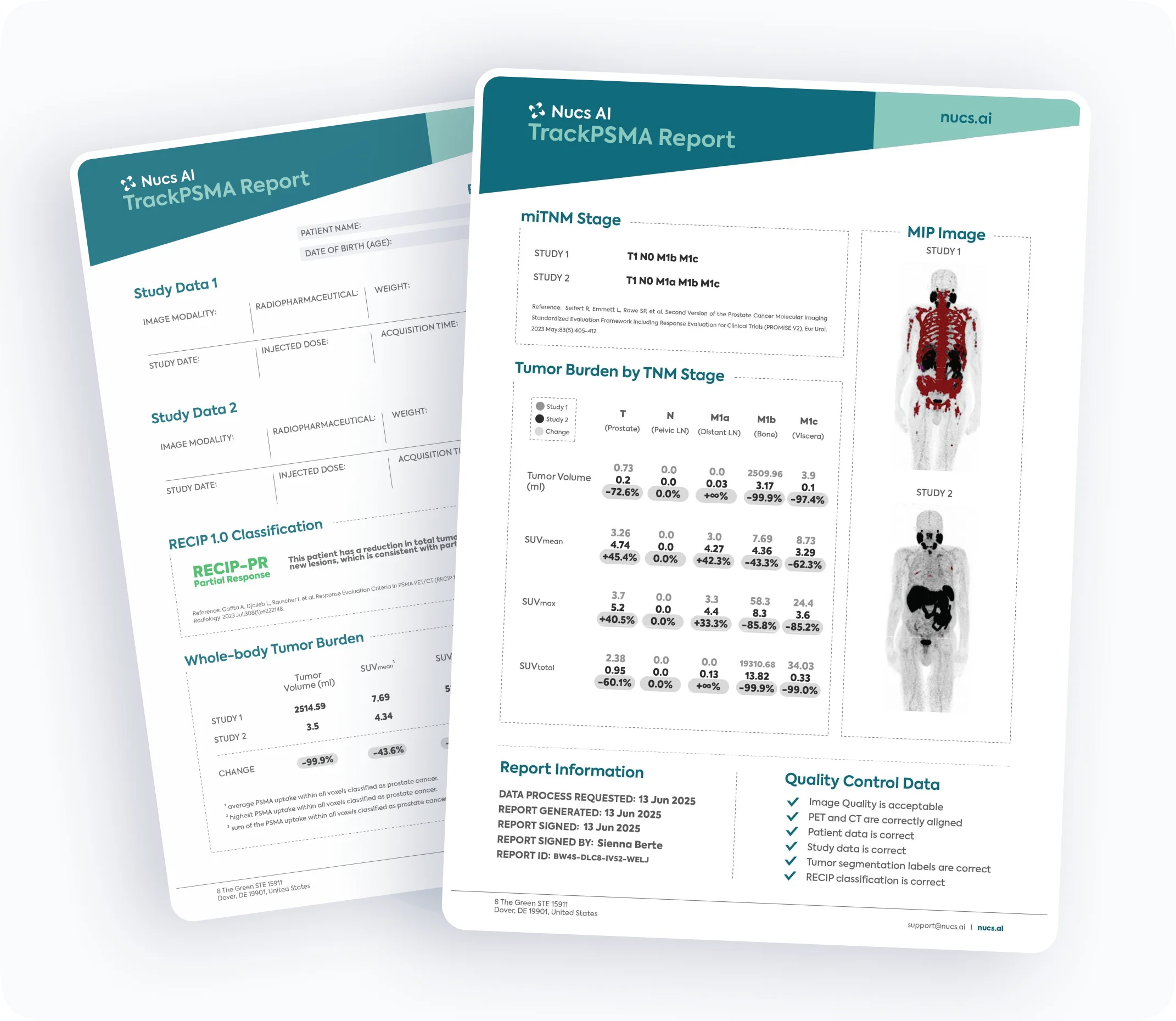
Key Features
TrackPSMA is an AI tool for fully automated treatment response evaluation in prostate cancer using PSMA-PET/CT. It enables clinicians to compare scans over time, quantify changes in tumor burden, and assess response using RECIP 1.0 — with the goal of identifying early progression in patients unlikely to benefit from continued therapy.

Scan Comparison
This feature allows clinicians to select two different PSMA-PET/CT scans from the same patient to compare changes over time.

Automated Quantification
The system automatically calculates the changes in key whole-body tumor metrics between the two selected scans, such as total tumor volume, SUVmax, and lesion count.

Response Assessment
TrackPSMA provides a semi-automated RECIP 1.0 (Response Evaluation Criteria in PSMA Imaging) classification, such as Partial Response (PR), based on the quantified changes between the two scans.
Audience Value Overview
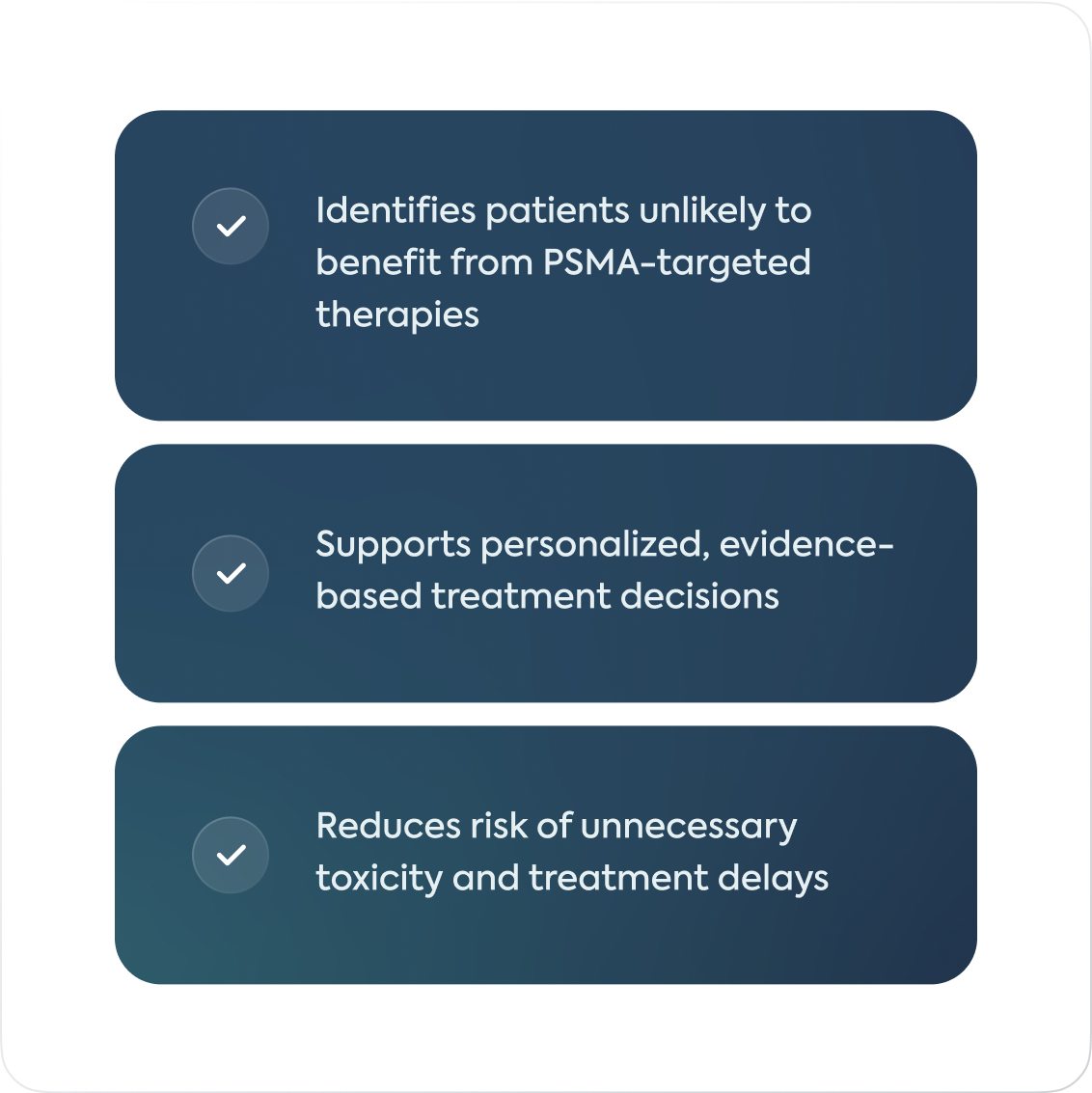
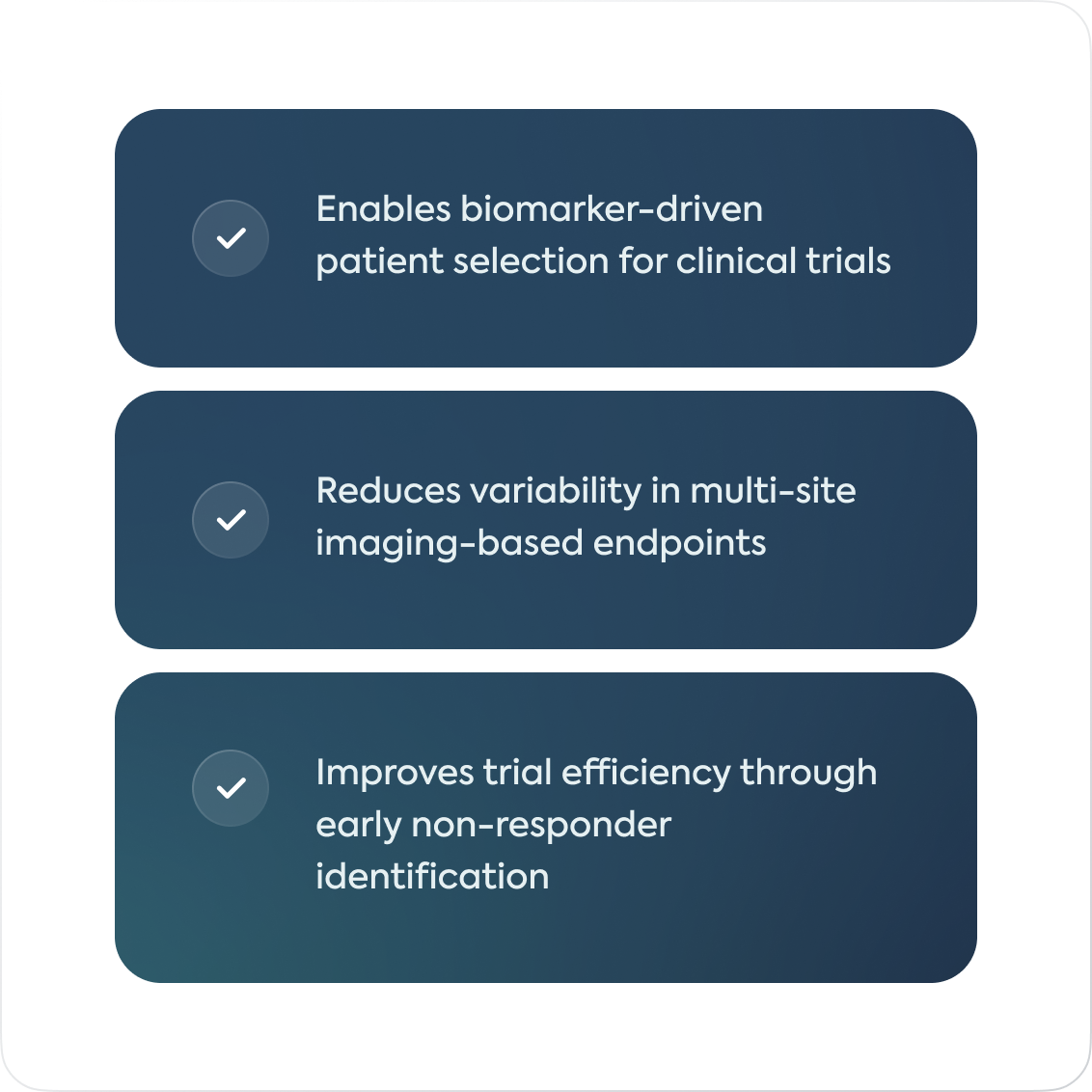

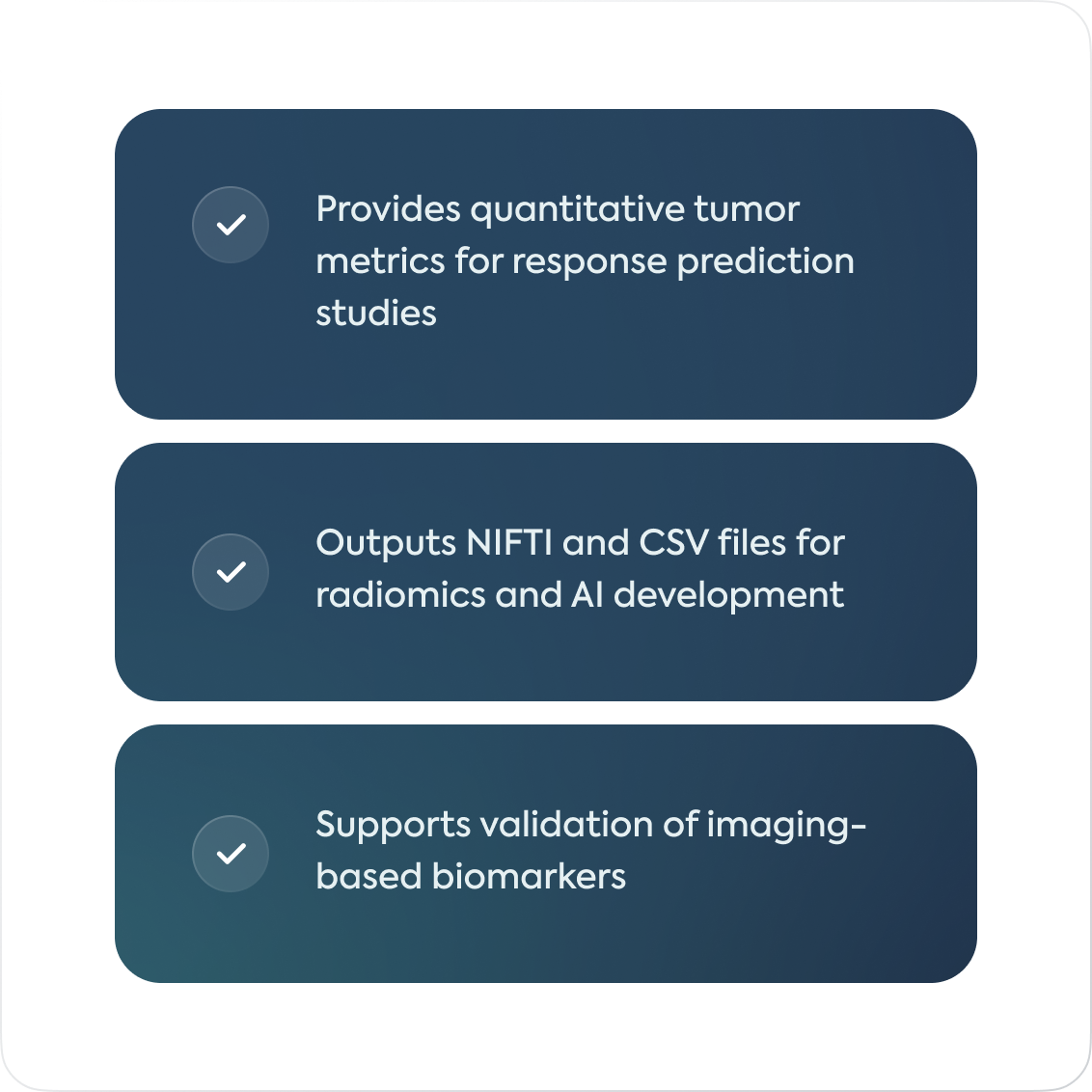

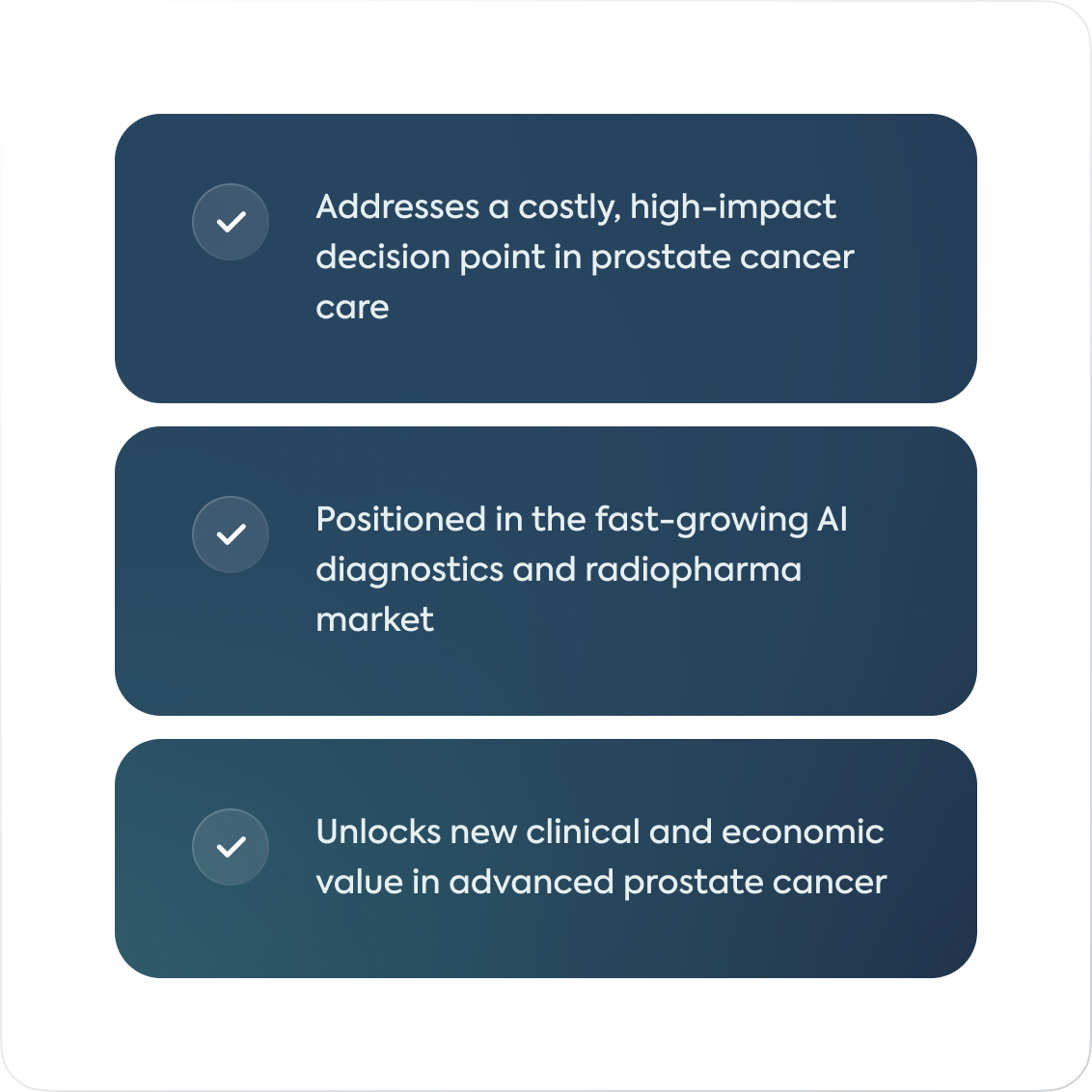
Clinical Applications
SelectPSMA supports clinical decision-making by identifying patients most likely to benefit from PSMA-targeted therapies. From therapy planning to trial enrollment, SelectPSMA adds precision at every stage, helping clinicians personalize care with confidence.



